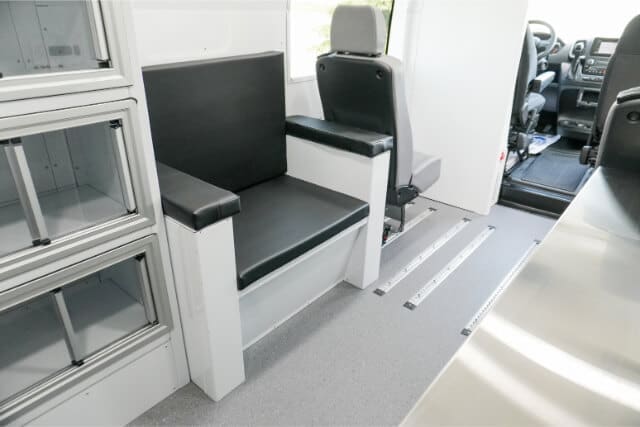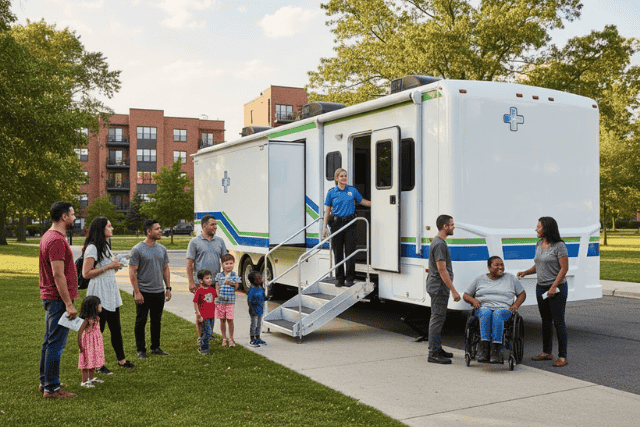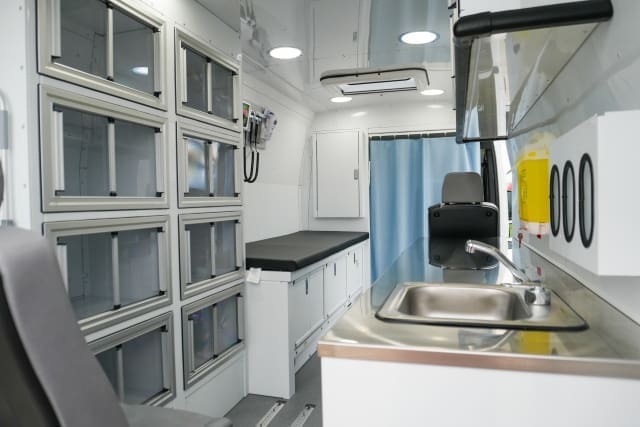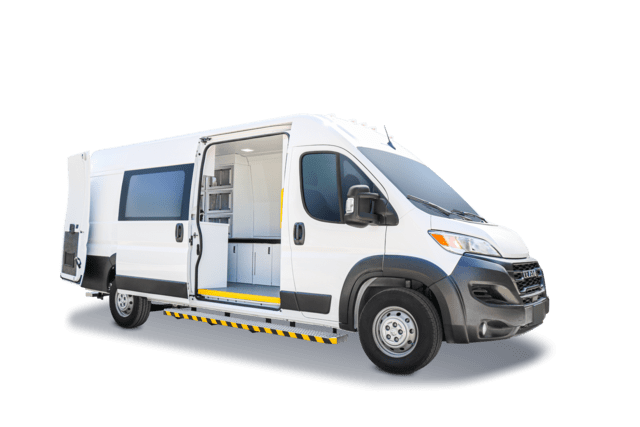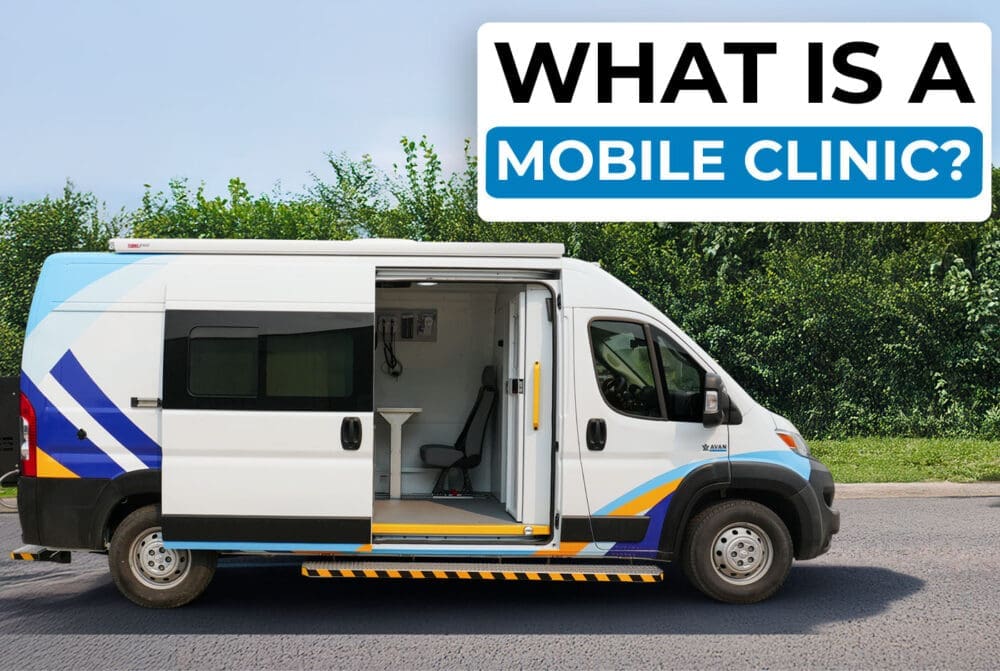If you’re here, you’ve probably got a fixed clinic or health program up and running, but now you’re wondering, “What is mobile phlebotomy, and should we be offering it too?”
Mobile phlebotomy is when a trained healthcare professional travels to the patient to draw blood. The patient could be in their home, a shelter, a community center, or even a parking lot. It takes the lab to the patient instead of the other way around.
This is a big deal for folks who can’t easily get to a lab.
That includes:
- Seniors
- People living with disabilities
- Folks without a car
- Those living in rural areas
If they can’t get tested, they can’t get diagnosed. That can lead to worse health problems and higher costs later on.
If you’re part of a health program or nonprofit, you probably know this already. The need is there, but the access isn’t. That’s where mobile phlebotomy helps. It fills the gap between patients and care.
At AVAN Mobility, we build mobile medical units that make mobile care possible. We’ve helped health networks and organizations like yours and Pacific Clinics across the U.S. bring services like blood testing right to their communities. Our vehicles are built to be clean, easy to drive, and designed with both patients and staff in mind.
In this article, you’ll learn:
- Why mobile phlebotomy matters
- Who it helps
- How it works
- The top five benefits of mobile phlebotomy
Why is mobile phlebotomy so important?
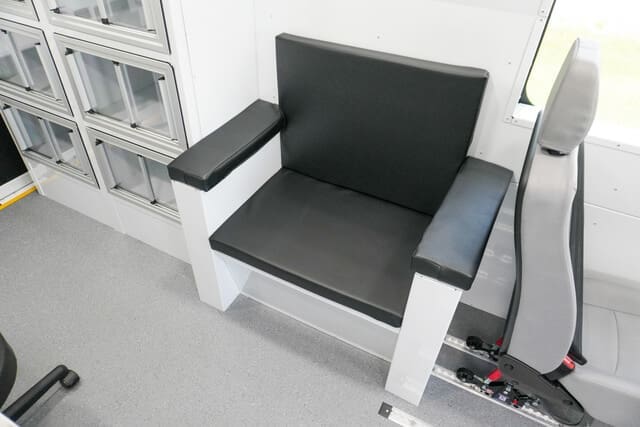
Now that you know that mobile phlebotomy is all about blood collection outside a regular clinic, let’s discuss why it matters.
Mobile phlebotomy is becoming a must-have for clinics that want to stay flexible, cut down on no-shows, and serve people who can’t easily make it to appointments.
Here’s why it matters:
- Blood tests kick off care: Most treatments start with lab work. In many cases, no blood draw means no answers.
- Patients follow through: When bloodwork comes to them, people are more likely to get it done.
- Results come in faster: That means quicker decisions, faster care, and less delay.
Adding mobile phlebotomy services to your clinic doesn’t mean replacing what you’re already doing. It just gives you more options, more flexibility, and more reach.
It also helps with:
- Reducing the load on your fixed clinic
- Reaching people in remote or rural areas
- Building trust with patients who need care at home or in community settings
And if you’re thinking this might mean a huge investment, it usually doesn’t. A mobile clinic for phlebotomy costs far less than opening a new building. You don’t need to hire a full lab team either. Just the essentials to get blood safely from point A to point B.
This kind of care isn’t the future. It’s already here, and it’s changing how we connect people to the help they need.
Who does mobile phlebotomy help?
For many people across the U.S., mobile phlebotomy is a much-needed service that removes barriers to care. Long drives, crowded clinics, and mobility challenges make a simple blood draw a big ordeal. This is where mobile phlebotomy shines.
Here’s a closer look at a few examples of the kinds of people mobile phlebotomy services help:
Seniors with limited mobility
Let’s take an example of Ruth from Sarasota, Florida. She’s 95, uses a wheelchair, and doesn’t drive anymore. She needs regular blood tests to manage her medications, but getting to the clinic means booking a ride service, waiting around, and getting worn out.
Instead, a mobile phlebotomist visits her home. No traffic, no waiting room, no stress.
People living with disabilities
Mobile phlebotomy also benefits those with disabilities. Think about Daniel in Columbus, Ohio.
He lives with a brain injury and finds loud, busy places overwhelming. A trip to the lab can trigger anxiety and confusion.
Mobile phlebotomy gives him a quiet, familiar setting. The care comes to him, not the other way around.
Patients with chronic illness
Leah in Albuquerque is on dialysis. She’s exhausted most days and can’t handle long trips across town. She still needs regular bloodwork to keep her treatment on track.
A mobile visit means she gets the care she needs without pushing her body too far.
People in rural or remote areas
In places like rural Montana or the Navajo Nation in Arizona, the nearest lab might be hours away. That’s a major hurdle for people who don’t have easy access to transportation or can’t take time off work.
Mobile phlebotomy closes that gap. It brings lab services to people who would otherwise go without.
Busy families and working adults
Sarah, a single mom in Atlanta with two kids, works full-time and keeps putting off her bloodwork because the lab closes before she’s off work.
A mobile blood draw at her house after dinner? That’s finally doable.
Veterans and people in VA housing
Tony in San Diego, California, is a veteran living in subsidized housing. He has PTSD and mobility issues. Getting to a hospital is tough, and he often skips appointments.
Mobile phlebotomy helps him stay on top of his health while staying in a place where he feels safe.
Group homes and assisted living
Staff at care homes in places like Pittsburgh, Pennsylvania, often care for dozens of residents. Taking them all to an outside lab is expensive and stressful.
Mobile phlebotomy makes things easier for staff and safer for residents. Everyone gets the tests they need, without the hassle.
Homeless outreach programs
Outreach teams in cities like Seattle or Chicago offer mobile care to people experiencing homelessness. But sending someone to a lab for bloodwork? Not easy.
Mobile phlebotomy lets healthcare providers test and treat on the spot, right where the need is greatest.
As you can see, mobile phlebotomy brings healthcare back to the people. It helps folks who are often left out of the system: Seniors, veterans, working parents, rural families, and more. This is healthcare that meets people where they are, both literally and emotionally.
How does mobile phlebotomy work?
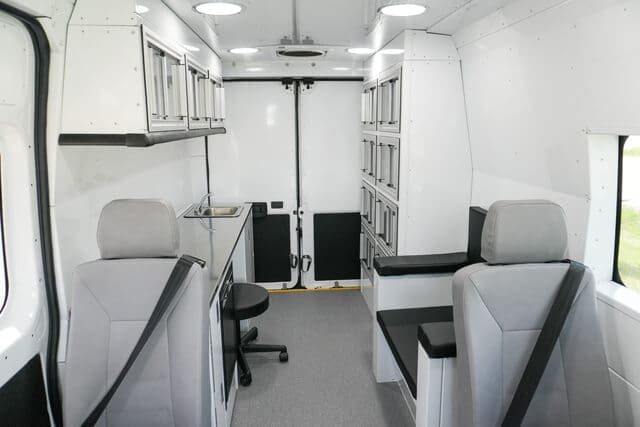
Mobile phlebotomy might sound fancy, but it’s pretty simple. As you now know, it’s just a blood draw, done somewhere that’s not a lab.
Instead of making people go to a clinic, the phlebotomist (the person who draws blood) goes to them. It could be someone’s home, a long-term care facility, a shelter, or even a workplace. That’s what makes mobile phlebotomy services so helpful.
Here’s how it works:
Step 1: Book the appointment
Someone schedules a visit with a mobile phlebotomy provider. This could be done online, by phone, or through a healthcare provider. In many cases, a doctor or nurse sends the order to the phlebotomy company directly.
Step 2: The phlebotomist travels to the patient
The mobile phlebotomist arrives with everything needed, including gloves, tubes, swabs, and a cooler (if their vehicle doesn’t have a fridge) to keep samples fresh.
Step 3: The blood draw happens on-site
It’s quick and private. The patient can sit comfortably on their own couch or bed. There is no waiting room, no busy clinic, and no stress.
Step 4: Samples get delivered to the lab
After the draw, the phlebotomist delivers the blood to a partner lab. That’s where testing happens.
Step 5: Results go back to the doctor
Like a regular blood test, the results are sent to the healthcare provider who ordered them. They’ll follow up with the patient if anything needs attention.
That’s it. Mobile phlebotomy in the U.S. is all about convenience, comfort, and access. The goal is to keep people from falling through the cracks, especially those who can’t make it to a lab.
What are the top 5 benefits of mobile phlebotomy?
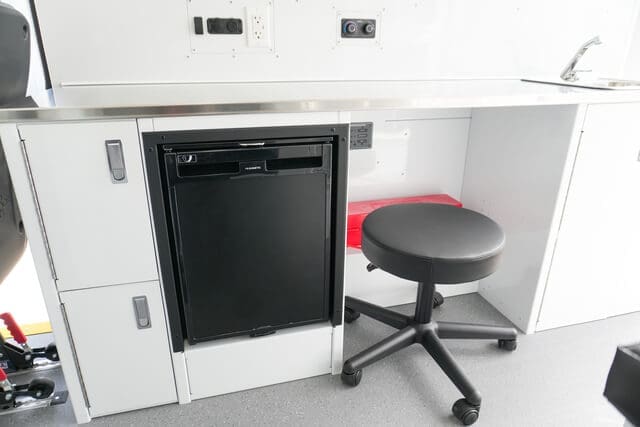
Beyond more convenience, mobile phlebotomy offers benefits that can boost healthcare for patients and clinics alike.
1. Fewer delays: Diagnoses happen sooner, not someday
When someone misses their blood test, everything else slows down. That could mean a missed diagnosis or a late treatment plan. And for folks managing diabetes, cancer, or heart conditions, late isn’t just inconvenient. It can be dangerous.
Mobile phlebotomy helps people follow through. You meet them where they are, so they don’t have to choose between their health and their schedule.
Faster blood draws lead to:
- Quicker lab results
- Sooner follow-ups with care teams
- Fewer serious health issues down the line
Think of it like patching a leaky roof before the rain starts. You’re helping catch problems before they grow into emergencies. And the best part? Patients don’t need to go anywhere to do it.
2. Better preventive care, right where people live
You don’t always need a full lab to make a big difference. Many common health issues, like high cholesterol or low iron, appear in bloodwork long before someone feels sick. That’s where preventative care matters.
Mobile phlebotomy makes it easier to run screening programs. Instead of asking people to come in, you bring care into the community. That simple switch makes a huge difference for people who can’t take time off or travel far.
It works great for:
- Public health programs
- Rural outreach teams
- Clinics running wellness events
Want to host a diabetes screening at a school gym? You can. Need to set up a pop-up clinic in a library or parking lot? Also doable.
The more chances people get to test early, the easier it is to catch problems before they get worse. And that means less pressure on your team later.
Now let’s look at how this helps the caregivers holding it all together.
3. Less stress: Caregivers need a breather, too
Every patient has a story. And behind a lot of those stories? A caregiver who’s tired, busy, and doing their best.
Think about a mom looking after her adult son with disabilities. Or a PSW trying to get five residents to five different appointments. Coordinating rides, meds, and clinic visits? That’s a full-time job.
Mobile phlebotomy takes one thing off their plate.
Here’s what that helps with:
- Less juggling of appointments
- Fewer long drives and wait times
- More energy for the rest of the day
Caregivers don’t always ask for help, but they sure appreciate it. And this kind of help shows up right at the door.
Now, let’s look at how mobile phlebotomy can grow your reach, without building a thing.
4. Bigger reach: Without adding buildings or staff
You want to serve more people, but expanding a clinic is a big ask. Permits, staffing, and construction can all add up fast.
Mobile phlebotomy skips that. One mobile phlebotomy van can bring services to different towns, neighborhoods, or organizations every day. You don’t need to build anything new. You just roll up, do the work, and head to the next stop.
A mobile unit can cover:
- Daily outreach in underserved areas
- Weekly visits to senior living homes
- Monthly partnerships with shelters or clinics
It’s flexible. It’s efficient. And it lets your team adapt quickly when needs change.
5. Stronger trust: The same face builds better care
When people see the same phlebotomist again and again, they relax. It feels more like a check-in and less like a medical procedure.
That’s especially true for folks with anxiety, PTSD, or past trauma in clinical settings. A calm visit at home with someone they know? That’s care that feels safe.
Trust like this leads to:
- Better communication
- More follow-through
- Fewer missed visits
It also gives you more chances to build relationships with communities you want to serve long-term. And that’s something no fancy equipment or building can replace.
Interested in learning more about mobile phlebotomy?
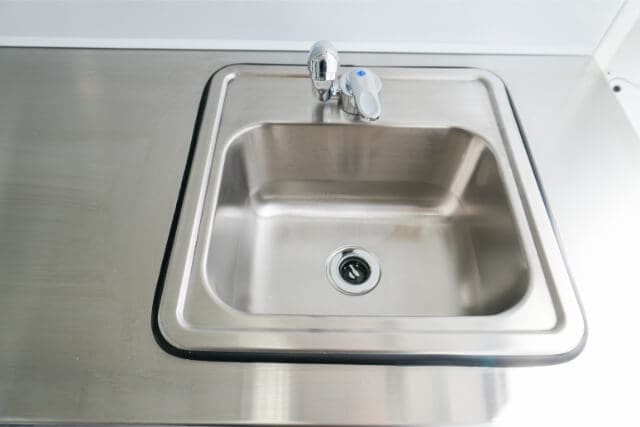
You came here wondering, “What is mobile phlebotomy?” Maybe your clinic is overwhelmed, or patients are missing appointments because they can’t get to you. That gap between care and access can be inconvenient for you and your patients.
Here’s what you’ve learned:
- What mobile phlebotomy is: A service that brings blood draw services directly to patients.
- Who it helps: From seniors in wheelchairs to busy parents and rural communities.
- How it works: Mobile units equipped like clinics come to patients’ locations.
- Why it matters: It improves access, reduces clinic crowding, and enhances patient comfort.
- Top benefits: Faster test results, better infection control, and increased patient privacy.
At AVAN Mobility, we specialize in designing and delivering mobile medical vehicles that remove barriers to healthcare. With over a decade of experience, we understand the unique needs of communities across the U.S. Our mobile units are built to provide comfort, dignity, and real-world functionality. We’re here to help you extend your reach and impact, whether in a bustling city or a remote area.
If you have questions or want to explore how mobile phlebotomy can benefit your organization, click the button below to talk to a mobility expert.
Not ready to chat yet? Check out our Learning Center for more resources to help you make an informed decision, or read the articles below.
Start by checking out our article on the six ways a mobile medical unit improves access to healthcare.
After that, read through our article on mobile medical van customization. This will give you a better idea of what features you can add to your mobile phlebotomy unit.
